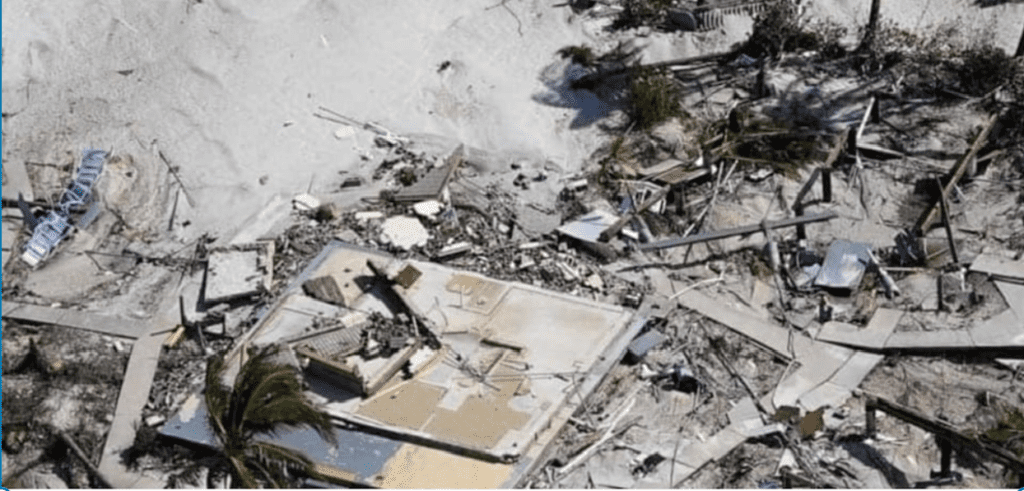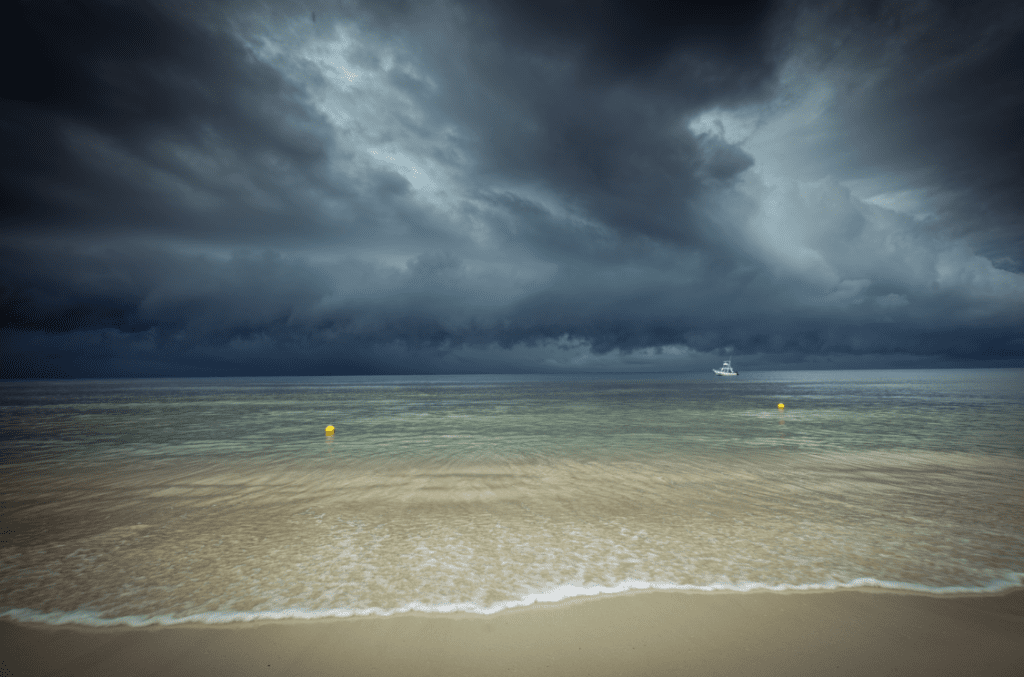We are sending our deepest, heartfelt love and support to our friends and family in southwest Florida, who were impacted by Hurricane Ian. The impact of this storm is tremendous, and we know our Florida friends will be rebuilding their homes and their communities for years to come. In the wake of this disaster, there are those who need our immediate support, and those who are not in life-threatening danger across the state but were still impacted. We wanted to share resources for those wishing to help others in acute need, and also share some strategies to help other Floridians who underwent mental and physical stress leading up to the storm and after.
In such times of disbelief and empathic grief for others, we think: How can I help? The Herald Tribune of Sarasota posted a wonderful list of a few organizations who will be supporting those impacted in their early hours of recovery (1). Below is a list of a few organizations who are rallying support to send resources to Southwest Florida.
Organizations to Help Southwest Florida
Florida’s official disaster relief fund coordinates aid across governmental and nongovernmental organizations in the state.
The American Red Cross is accepting donations and providing supplies, shelter, and other relief.
Feeding Florida is a network of the national food bank nonprofit Feeding America. The organization is coordinating with food banks across the state to provide food to victims of the hurricane
Farm Share is a Florida nonprofit that sources leftover fruits and vegetables from farms and distributes them. The organization is sending truckloads of foods and supplies to Floridians in need.
Dream Defenders – Community Emergency Operation Center
This nonprofit is collecting food and supplies to deliver to hurricane victims. It is run by Dream Defenders, a Florida nonprofit supporting Black and Brown young people across the state.
There are many other organizations that may resonate with your desire to support, as outlined in an @only.in.napes.239 instagram post (2). There are many groups offering support for:
- Food (Community Cooperative, Friends in Service Here),
- Housing (Habitat for Humanity, Lee County Homeless Coalition),
- Community Rebuilding (Fort Myers Beach Community Foundation),
- Grief Support (Valerie’s House),
- Ecosystem Rehabilitations (Sanibel-Captiva Conservation Fund, Keep Lee County Beautiful).
For those of us who were on the direct path of trajectory for days, but then suddenly were shifting to the outskirts of impact, there is an aftermath of stress and grief. Although we are mostly done cleaning up the foliage strewn about our yards and streets, and we are slowly getting power back to the thousands impacted by outages across our counties, we still have a lot of work to do. Dennis Phillips from ABC Action News and Weather in Tampa Bay captured what many of us in the Tampa Bay area feel (3):

No Words. I just can’t describe how I am feeling seeing the images coming out of Fort Myers and other parts of Florida. I feel kind of guilty wondering why much of the [Tampa] Bay area was so blessed and other areas were devastated. I hope our coverage kept you informed, and hopefully eased your stress level a bit as Ian was coming through… Hope you and yours made it through OK.
Phillips captures one of the most important facts to recognize as a Tampa Bay-area resident. Even though we were spared the direct encounter with Ian’s fiercest conditions, we still have those locally who are living with trees that have fallen in their neighborhoods, multi-day power outages, and several days of physical preparations and cleanups.
Strategies to Help Cope with Stress
We wanted to share a few strategies on how to cope with the mental and physical stress that is inevitable in these difficult and scary times. Below are three strategies to use in the aftermath of Ian to recover from the mental and physical stress.
- BREATHE
The body’s central nervous system is the governor of our state of stress or relaxation. When an impending storm arrives, we naturally enter what’s called fight or flight mode, meaning that we naturally get into a state of focused preparation. Fight or Flight is often referred to as “running from a tiger” because all you are thinking of is survival. However, once the “running from a tiger” abruptly stops or the risk of being hit head-on by Ian passes, it’s common to get a rush of emotion and stress once the “survival mode” switch is powered down. Or, you might still be in fight or flight mode, still living without power and/or managing the aftermath of the storm in your area.
When managing this major pendulum swing in stress levels and emotions, we have our breath to rely on. Our respiratory rhythm directly affects the central nervous system, so here is a simple breathing exercise to try to down regulate your nervous system to a calmer state.
Diaphragmatic Box Breath
- Lie on your back with your knees bent and your back in neutral position (slightly arched).
- Place your hands on your stomach and concentrate on your breathing.
- Inhale for a 3-second count while expanding your stomach without any trunk or chest movement. Hold the inhale in for a 3-second count. Then, exhale for a 3-second count without forcing. Hold the exhale for a 3-second count.
- Repeat 4-5 times. Perform as needed throughout the day.
- SUPPORT YOUR BACK
Preparing and recovering from a hurricane means manual labor. In a matter of hours, we relocate entire outdoor areas to somewhere safe, lift and haul 10-pound sand bags, hang storm shutters, and many other strenuous preparations. When you’re just trying to get the job done in time, it’s safe to say good lifting mechanics is the last thing on your mind.
Many spent 6-12 hours restoring their homes to status quo and cleaning up all of the debris from wind and rain around their yards. This is a massive physical load in just a few short days.
If you’re feeling sore and stiff after Hurricane Ian, here is a quick fix to take the stress off your aching back, try this stretch.
The Bretzel Stretch
- Lie on your side with your neck supported by a pillow.
- Bend your knees and hips just short of 90 degrees.
- Hold the top knee with the bottom hand and move your bottom leg back, bringing your thigh as far behind the plane of your body as possible, then bend the knee as much as possible and try to grasp your ankle with your hand (it is possible to use a belt or strap if your flexibility is limited).
- Once you are in position with both legs secured, rotate the shoulders so you face the ceiling, helping the movement with your head (looking where you’re heading).
- Hold this stretch for 60 seconds and then repeat on the other side. Perform 2-3 times a day for relief.
- MOVE
When preparing and riding out a hurricane at home, at someone else’s home, or in a hotel, the first term that comes to mind is cabin fever. Having to stay indoors for 24-48 hours is hard on anyone, especially when your house is full of patio furniture and the skies are getting darker by the minute. This compounds to the concept of stress described in the breathe strategy. So, it is important to reground yourself in the days after a hurricane.
One of the eeriest things that happens after a hurricane is that after the storm passes, the skies are blue, and the air is cool and crisp. However, we still have that refugee feeling and sense of fear and anxiety looming. During this time, it is imperative you get the trifecta of re-centering after a storm passes in: movement, sunshine, and fresh air.
We recommend that you go for a slow walk, while staying vigilant of your surroundings for downed wires, fallen trees, or weakened branches. This walk, paired with the fresh air and sunshine is a great tool to kickstart getting back to normal. It is very difficult to go from days of fight or flight to flipping the switch back to normalcy. Give yourself some grace to ease back into it and start with this slow, mindful walk. If you’re so inclined, add in some thoughts of gratitude for your safety or reflections of compassion for those significantly affected.
Our New Regeneration Orthopedics of Florida team is sending love, thoughts, and prayers to the families affected in southwest Florida. If you have experienced any physical, orthopedic pain from your Hurricane Ian preparation or recovery efforts, please don’t hesitate to contact us to see if we can help.










